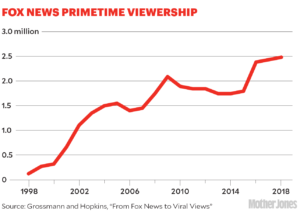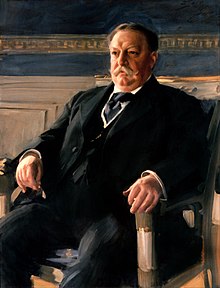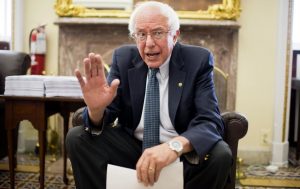HuffPost
Saturday, May 21, 2022
May 21, 2022To solve humanity’s problems, we need well-functioning brains…eating and living well with kindness and awareness…always compassion…building our brain architecture.
Tending body is tending to the self, and tending to the self is tending community, tending community is tending country.
[On Being]
J
O
Y
“The joy of life is to put out one’s power in some natural and useful or harmless way.”
-Oliver Wendell Holmes
Valerie Kaur
Oh my loves.
“They’re going to keep killing us.” This was my first thought after the news broke about the shooting at a grocery store in Buffalo. Terror and fatigue.
I’ve organized around white supremacist hate for 21 years, since before this gunman was born. The killings have become more frequent, more effective, and more efficient at taking life. I got the news while working on a memorial video on the white supremacist mass shooting in Oak Creek 10 years ago, revisiting all that pain. How to feel fresh grief when we are already in grief? How does the heart expand, instead of shut down?
Revolutionary love is the choice to labor for others, opponents, and ourselves. What is your role right now?
Will you focus on others? Grieve with Black people, show up to local vigils and gatherings, listen to the stories, fight for anti-racist policies, build new relationships of solidarity. Do one thing in your sphere of influence — your school, workplace, house of worship, or home — to stand in love.
Will you focus on opponents? The gunman cited “replacement theory” in his manifesto, a theory that nearly one in three Americans believe. Reach out to the colleagues, neighbors, relatives in your life who subscribe to this dangerous and racist belief. Open a channel for deep listening, share stories, stop the spread of misinformation.
Will you focus on your body and your people? If you can feel how this shooting touches trauma in yourself and in people you love, this is the time to make space for healing. Grieve and rage, wail and scream, rest and breathe. Be with people who make you feel safe. Let in softness and love into the places that ache. Together, we survive this. {And what is yet inevitably to come. -dayle}
[1,000,000 + have died from COVID. 1 in 3 U.S. citizens believe the plague has ended. It has not.]
More from Valerie:
Where do you notice feeling grief in your body? What is the quality of that grief? What is the shape of grief inside of you? If it feels uncomfortable, take another deep breath and stay with it. Breathe through it.
What does your body need to be brave with this grief? What do you need to feel it and to move through this energy? What rituals are you called to? Who do you need by your side.
Who have you not yet grieved with? Whose story have you not fully let into your heart? What community’s struggle have you not fully taken in? Notice what is happening in your body. If your fists tighten, or your heart beats fast, or if shame rises to your face, it’s okay. Breathe through it. Trust that you can. The heart is a muscle: The more you use it, the stronger it becomes. You don’t need to know people in order to grieve with them. You grieve with them in order to know them.
What do you need to do to be able to grieve with them? What vigils or marches need you? What houses of worship are you ready to visit? What phone call are you ready to make? You can begin where you are, with a simple text or email, saying to someone “I’m here for you.”
How to be brave with your grief.
https://valariekaur.com/2022/04/how-to-be-brave-with-your-grief/
“Loving someone means that one day, there will be grieving. They will leave you, or you will leave them. The more you love, the more you grieve. And so I invite you to honor your grief: it’s a sign of how deeply you have loved.”
-Valerie
Community, then country.
Coronado Times
Meet Brian Trotier
Triangle Project, located in the East Village of San Diego, just across the bay.
“The Triangle Project is a pilot program created to help improve the lives of unhoused people. Brian has been helping out in this area for about fifteen years and has developed relationships with many of the residents. A huge issue has been the trash in the area. The residents, mainly living in tents, don’t have a place to dispose of their trash which is unsightly, unsanitary, and demoralizing for them. Richard Aaron Horton, 64, a longtime resident, started improving the area by picking up trash. Brian Trotier knows Richard well and has expanded the effort by securing funding from the Lucky Duck Foundation. This local foundation focuses on the homeless and has contracted with EDCO for a dumpster to collect the trash.
The concept is simple, and the results so far have been amazing. Brian reported that, as of last week, the Triangle Project had collected in the previous 20 days, 3,794 bags of trash weighing a total of 23.89 tons. It is likely that much of this, including plastic, would have found its way into our bay and ocean. Here is how it works: every Monday and Thursday, EDCO drops off a dumpster at 8 am. Brian brings bags, gloves, and a stack of cash. Volunteers walk around the area greeting residents and asking if they’d like trash bags. For almost all, the answer is an enthusiastic “yes!” Residents get to work cleaning up their neighborhood. For every full bag of trash they bring to the dumpster, Brian gives them $2. The roughly two-block area goes from being very littered to being very clean within an hour.”
“riangle Project’s results are about double what Brian and Lucky Duck projected, and the benefits have gone far beyond a cleaner neighborhood (and bay). Residents express appreciation for being seen; they get along better with each other. “They have a common enemy—trash,” Brian acknowledged.”
“Keeping the Earth clean. That’s what’s happening in the long run. It’s a domino effect.”
https://coronadotimes.com/news/2022/05/18/meet-emerald-keeper-of-the-month-brian-trotier/
The Independent
My Carbon Footprint: the rise of the nearly new
by, Kate Hughes
“So often, being more eco is inaccurately pinned to greater cost, when actually – especially when it comes to everyday buying decisions – the opposite is true.
This widespread, if subtle shift in the way we shop, including the disintegration of the stigma around nearly new, vintage, and preloved may well have some relationship with the climate crisis but make no mistake, this is largely financially led.
What I love about second-hand too, is that it doesn’t preclude us from layering up further planet and cash-saving approaches.
When the old boy on our street moved into a retirement flat the neighbours bought his lawnmower off him. There’s now one lawnmower between five households, saving space, cash and helping maintain and develop lines of local communication and a sense of community.
More than four in 10 of us gave goods away for free locally in the first few months of the year, while half donated products to charity and more than a third even made financial donations despite experiencing hardship.
Free stuff – everything from haircuts to sofas are also on the rise, the site reports.
So go forth and embrace the charity shop, the quirky apps, the leviathan websites.”
HuffPost
Living With The Far-Right Insurgency In Idaho
A radical GOP faction, in open alliance with extremists, is seizing power and targeting its opponents with cruelty.
Some wonder: Is it time to leave? (Yes. It is.)
Jennifer Ellis, photographed in her home on April 3, 2022, created Take Back Idaho to push back against the right-wing, extremist views and tactics that have dominated the state’s politics.
‘A lot has been written about both the radicalization of the Republican Party and the decline of democracy in the U.S. — about the country being at a precipice. It’s maybe easy for those warnings to become background noise, or to dismiss them as doom-mongering pieces of clickbait. But in Idaho, the nightmare scenario is crossing into reality, as an authoritarian GOP sets about to create a whiter, Christian nation.
These MAGA radicals have gestured at the future they want: no rape and incest exceptions to Idaho’s abortion ban; no emergency contraception; no gender-affirming health care for minors; the banning of books; the jailing of librarians; and maybe no public education altogether.
I recently spent a week traveling across the state, from Sandpoint in the northern panhandle down through the green slopes and whitewater of Hell’s Canyon to the plains of Ada County, and then across lava rock and sagebrush to Blackfoot. In all these places, Democrats and more moderate Republicans view Tuesday’s primaries as an existential affair. Some are considering leaving the state if MAGA extremists consolidate more power. Others are digging in their heels.
The people I talked to were not all that accustomed to alarmism, which made it striking to hear some of their voices tremble when they talked about what’s happening to their home. Their message for the rest of the country? It’s gonna get bad. The GOP really will go that far.
“They have completely rebranded what it is to be a conservative here in north Idaho, and they have literally excommunicated and cleaned house of any rational, regular conservative from their ranks.”
– Shawn Keenan, local Democratic activist
“As much as I want to point to examples of their adverse impact on the legislative process — and there’s many things to point to — part of me, the social scientist in me, the military veteran in me, wants to, you know, not just hate the player, but hate the game,” said Mathias, who served in the Coast Guard and has a Ph.D. in public policy.
A grading system like the Freedom Index makes the often inscrutable process of legislating more accessible to voters, Mathias said, and the IFF is an outrageous arbiter.
Mathias is intimately familiar with the group. Last spring, he watched state Rep. Ron Nate (FI Score: 97%) and other far-right legislators manufacture a racist moral panic about Boise State University indoctrinating students with “critical race theory.” (It was not.) Nate, using talking points lifted from an IFF white paper, argued for cutting part of the school’s budget.
Mathias says he typically likes to “keep his powder dry” in the statehouse — Democrats are such a minority there, it’s not worth the fuss to debate every proposal — but in this case, both as the only Black man in the legislature and as a Boise State alumni, he felt compelled to speak.
Going to Boise State on the GI Bill, he told his colleagues in a speech on the House floor, pausing to fight back his emotions, “provided opportunities I’d never seen in my life. It changed my life.”
Critical race theory, he continued, simply recognizes that there are institutional biases — in “housing, health, education, wealth, income,” Mathias said — that have existed since our country was founded. “People of color always come out on the losing end,” he added, his voice breaking. “Always. And I don’t think it’s unfair to acknowledge it.”
Across Idaho, the far right has laid siege to nonpartisan positions, some of which require specific expertise, and made them partisan, installing loyalists with sometimes disastrous results.
A recent Vanity Fair piece, for example, profiled members of the national neoreactionary movement, acolytes of a philosopher named Curtis Yarvin, who is a close ally of billionaire Peter Thiel. This movement, which has buy-in from powerful GOP figures, is explicit about wanting to usher in the end of democracy by purging the current government of its enemies and establishing one-party control — or, put another way, authoritarianism.
J.D. Vance — the venture capitalist and “Hillbilly Elegy” author who recently won the Ohio Republican primary for U.S. Senate — is a follower of Yarvin’s. He positively likened this prospective purge to the deadly “de-Baathification of Iraq.”
“I think Trump is going to run again in 2024,” Vance told Vanity Fair. “I think that what Trump should do, if I was giving him one piece of advice: Fire every single mid-level bureaucrat, every civil servant in the administrative state, replace them with our people.”
Vance and Trump might look to north Idaho for inspiration.
“We’re losing here. We’re losing our state. We’re losing our town. … It’s just becoming overwhelming.”
– Sandpoint Mayor Shelby Rognstad
Full report:
https://www.huffpost.com/entry/far-right-idaho_n_628277e2e4b0c84db7282bd6/amp
‘Civil’ Society
October 8, 2021Kurt Thigpen was met with vitriol shortly after he became a school board member in Washoe County, Nevada. Credit: David Calvert, special to ProPublica
We’re Losing Our Humanity, and the Pandemic Is to Blame
“What the hell is happening? I feel like we are living on another planet. I don’t recognize anyone anymore.”
by Sarah Smith
Kurt Thigpen clenched his hands around the edge of the table because if he couldn’t feel the sharp edges digging into his palms, he would have to think about how hard his heart was beating. He was grateful that his mask hid his expression. He hoped that no one could see him sweat.
A woman approached the lectern in the center aisle, a thick American flag scarf looped around her neck.
“Do you realize the mask, the CDC said it’s only 2% effective?” she demanded. “You’re failing our children, you’re failing our country, you’re failing our students’ future ….”
Thigpen fixed his eyes on a spot in the back of the blue-and-green auditorium. He let the person speaking at the lectern fade. It will be over soon, he told himself.
“No, you’re not the boss of me, you work for us, I can’t breathe with it on —”
“Ma’am —”
“Don’t you dare cut my microphone —”
The crowd cheered. Thigpen focused on his breathing.
It will end soon, he told himself. It must. His sweat turned cold under his suit.
“The science isn’t there, take the kids outta the masks and let’s move on.”
When the eight-hour meeting finally ended, he would drive home and pull off the suit and rip off his shirt. He would only take care with his rainbow tie, resting it gently in the closet. It still hangs there today. He would close the door, lay down on his bed, and let himself cry.
The stories of cruel, seemingly irrational and sometimes-violent conflicts over coronavirus regulations have become lingering symptoms of the pandemic as it drags through its second year. Two men on a Mesa-to-Provo flight got into a cross-aisle fight after one refused to wear a mask. A Tennessee teenager asking his school board to impose a mask mandate in honor of his grandmother who died of COVID-19 got jeered by the crowd. A California parent angered by the requirement that his child wear a mask allegedly beat up a teacher so badly that the teacher had to go to the emergency room. An Arizona father showed up to an elementary school with zip ties, allegedly intending to make a “citizen’s arrest” over COVID-19 rules. A Missouri medical center has distributed panic buttons to about 400 employees after an increase in assaults on health care workers by people frustrated over coronavirus-induced visitation restrictions and long wait times.
“What the hell is happening?” said Rachel Patterson, who owns a hair salon in Huntsville, Alabama, and who has been screamed at, cussed out and walked out on for asking clients to don a mask. “Like, I feel like we are living on another planet. Like I don’t — I don’t recognize anyone anymore.”
Full piece: https://www.propublica.org/article/were-losing-our-humanity-and-the-pandemic-is-to-blame
Upworthy:
The National School Boards Association sent a letter to the Biden Administration stating that, “These heinous actions could be the equivalent to a form of domestic terrorism and hate crimes.”
The threats have prompted U.S. Attorney General Merrick Garland to address the issue. In response, Garland directed federal authorities to meet with local law enforcement over the next month to discuss strategies for addressing the increase in “harassment, intimidation and threats of violence against school board members, teachers and workers” in public schools across the country.
Just about every American would agree that we should work to protect school board members from threats of violence. However, Fox News reporter Peter Doocy used Garland’s decision to crack down on violent threats as a way to rile up conservatives.
Just about every American would agree that we should work to protect school board members from threats of violence. However, Fox News reporter Peter Doocy used Garland’s decision to crack down on violent threats as a way to rile up conservatives.
He completely mischaracterized Garland’s directive in a question he asked White House Press Secretary Jen Psaki on Wednesday.
“Does the administration agree that parents upset about their kids’ curriculums could be considered domestic terrorists?” he asked.
“Let me unravel this a little bit,” Psaki answered, saying that Garland is “correct” to say that threats of violence against public servants “run counter to our nation’s core values.”
“Regardless of the reasoning,” she said, “threats and violence against public servants is illegal.”
FOX NEWS mandate from TV host Tucker Carlson [HuffPost]
Your response when you see children wearing masks as they play should be no different from your response when you see someone beat a kid in Walmart. Call the police immediately. Contact child protective services. Keep calling until someone arrives. What you’re looking at is abuse, it’s child abuse, and you’re morally obligated to attempt to prevent it.”
MOTHER JONES:
September/October issue
The Real Source of America’s Rising Rage
We are at war with ourselves, but not for the reasons you think.
by Kevin Drum
Americans sure are angry these days. Everyone says so, so it must be true.
But who or what are we angry at? Pandemic stresses aside, I’d bet you’re not especially angry at your family. Or your friends. Or your priest or your plumber or your postal carrier. Or even your boss.
Unless, of course, the conversation turns to politics. That’s when we start shouting at each other. We are way, way angrier about politics than we used to be, something confirmed by both common experience and formal research.
When did this all start? Here are a few data points to consider. From 1994 to 2000, according to the Pew Research Center, only 16 percent of Democrats held a “very unfavorable” view of Republicans, but then these feelings started to climb. Between 2000 and 2014 it rose to 38 percent and by 2021 it was about 52 percent. And the same is true in reverse for Republicans: The share who intensely dislike Democrats went from 17 percent to 43 percent to about 52 percent.
Likewise, in 1958 Gallup asked people if they’d prefer their daughter marry a Democrat or a Republican. Only 28 percent cared one way or the other. But when Lynn Vavreck, a political science professor at UCLA, asked a similar question a few years ago, 55 percent were opposed to the idea of their children marrying outside their party.
Or consider the right track/wrong track poll, every pundit’s favorite. Normallythis hovers around 40–50 percent of the country who think we’re on the right track, with variations depending on how the economy is doing. But shortly after recovering from the 2000 recession, this changed, plunging to 20–30 percent over the next decade and then staying there.
Finally, academic research confirms what these polls tell us. Last year a team of researchers published an international study that estimated what’s called “affective polarization,” or the way we feel about the opposite political party. In 1978, we rated people who belonged to our party 27 points higher than people who belonged to the other party. That stayed roughly the same for the next two decades, but then began to spike in the year 2000. By 2016 it had gone up to 46 points—by far the highest of any of the countries surveyed—and that’s beforeeverything that has enraged us for the last four years.
COVID Shifts
April 22, 2020Our dear Gaia has mandated pause, a collective time-out, giving opportunity for us to re-consider what is possible. Planetary operations and behaviors are conducive to shifts now. Together, we can accomplish so much, in spite of ruthless and dangerous national and global leadership. We the people, sans greed, power and patriarchy. ‘Everything old is new again.’ What if we did things differently? -dayle
USPS
Defend the Post Office, Defend Black Workers
Jacobin
The United States Postal Service is a crucial institution for black workers in America. That’s why Bernie Sanders’s strong support for defending and expanding the USPS is a key racial justice issue.
For the average black worker, the postal service represents a stable, decent-paying career that is hard to find elsewhere. Today the average salary of a USPS employee is $55,000, and 21 percent of USPS employees are black. The history of black postal workers demonstrates the critical importance of government employment and a robust public sector for the advancement of black people in this country.
Saving and expanding the public sector will be a key fight for racial justice in the 2020 presidential race. Bernie Sanders, with his call for postal banking and robust government programs, is the only candidate offering a real plan to revive the postal service and the futures of black public-sector workers.
As Sanders puts it, “Post offices exist in almost every community in our country. There are more than 31,000 retail post offices in this country. An important way to provide decent banking opportunities for low-income communities is to allow the U.S. Postal Service to engage in basic banking services.” And beyond increasing revenue and employment for the USPS, this measure would eliminate the prevalence of payday loan centers that prey on poor communities of color.
The story of black workers in the post office begins with the legal end of slavery and the soldiers who fought for that freedom. As early as 1861, federal employment was opened up for black workers. In December 1864, Senator Charles Sumner passed a bill banning discrimination in postal employment. Though not always enforced, this protection was critical for enabling black workers to establish a foothold in a relatively stable and secure occupation.
A common theme throughout black history has been the importance of an activist federal government for advancing fundamental interests. Postal workers utilized executive orders in particular to improve their situation in the 1960s. This activism and the resulting legislation created a home for black women workers in the post office as well.
Among the few highlights in John F. Kennedy’s lackluster record on civil rights are his executive orders related to federal employment. Executive Order 10925 was issued in March 1961 and banned discrimination by employers and unions in federal contract work, followed by Executive Order 10988, which provided limited collective bargaining rights for federal employee unions that didn’t practice racial discrimination. These orders came after intense lobbying pressure from NAPE and the Negro American Labor Council.
The Equal Pay Act of 1963 was a key factor in helping black women find work in the post office in large numbers.
https://www.jacobinmag.com/2019/07/post-office-black-workers-bernie-sanders-usps
BENJAMIN FRANKLIN Postmaster General
July 26, 1775 to November 1776
Franklin’s postal career began in 1737 when the British Crown Post appointed him postmaster of Philadelphia. In Franklin’s day, newspaper printers often served as postmasters, which helped them to gather and distribute news. More important, postmasters decided which newspapers could travel free in the mail – or if they could travel by mail at all. Philadelphia’s previous postmaster, who printed a rival newspaper, had barred Franklin’s Gazette from the mails.
He encouraged postmasters to establish the penny post, a British idea he had implemented while postmaster of Philadelphia, whereby letters not called for at the Post Office were delivered for a penny. He also ordered postmasters to print in newspapers the names of people who had letters waiting for them. Remembering his own experiences as a printer and postmaster, Franklin abolished the practice of letting postmasters decide which newspapers could travel through the mail and mandated delivery of all newspapers for a small fee. Thanks in part to Franklin’s efforts, the British Crown Post in North America registered its first profit in 1760.
https://about.usps.com/who-we-are/postal-history/pmg-franklin.pdf
William Howard Taft
27th President of the United States
Inaugural address, March 4, 1909 [excerpt]
The incoming Congress should promptly fulfill the promise of the Republicanplatform and pass a proper postal savings bank bill. It will not be unwiseor excessive paternalism. The promise to repay by the Government will furnishan inducement to savings deposits which private enterprise can not supplyand at such a low rate of interest as not to withdraw custom from existingbanks. It will substantially increase the funds available for investmentas capital in useful enterprises. It will furnish absolute security whichmakes the proposed scheme of government guaranty of deposits so alluring,without its pernicious results.
The negroes are now Americans. Their ancestors came here years ago againsttheir will, and this is their only country and their only flag. They haveshown themselves anxious to live for it and to die for it. Encounteringthe race feeling against them, subjected at times to cruel injustice growingout of it, they may well have our profound sympathy and aid in the strugglethey are making. We are charged with the sacred duty of making their path as smooth and easy as we can. Any recognition of their distinguished men, any appointment to office from among their number, is properly taken as an encouragement and an appreciation of their progress, and this just policy should be pursued when suitable occasion offers.
Bernie Sanders:
“We cannot allow Donald Trump to use this horrific pandemic as an opportunity to bankrupt and privatize the Postal Service,” Sanders tweeted earlier this month. “Now, more than ever, we need a strong and vibrant postal system to deliver mail 6-days a week. Congress must act now to save it.”
“The situation is absolutely dire,” Mark Dimondstein, president of the American Postal Workers Union (APWU), told New York magazine in an interview last week.
The USPS has been hit hard by the sharp decline in mail volume caused by the coronavirus outbreak. The Postal Service also remains shackled by a congressional mandate requiring the agency to prefund its retirees’ health benefits through the year 2056.
“The post office will likely run out of money sometime between July and September of this year,” said Dimondstein. “If they run out of money, then the people lose the service.”
HuffPost:
‘The workers are part of a workforce deemed “essential” during the coronavirus crisis, meaning that — like grocery store workers, firefighters, garbage collectors and more — they still have to show up to work every day, even as large swaths of the country have closed stores and schools, and companies have mandated employees work from home.’
Senator Bernie Sanders conducts a news conference on July 5, 2011.
“If the goal of the Postal Service is to make as much money as possible,” Sanders told The Nation, “tens of millions of people, particularly low-income people and people in rural areas, will see a decline in or doing away with basic mail services.”
First among the Vermont senator’s proposals is an end to the USPS’sburdensome pre-funding mandate, which requires it to prepay decades of retiree health benefits. This unique requirement, which costs the USPS billions every year, was imposed by Congress in 2006, when mail volumes were historically high, but after the recession it became impossible to make the payments.
Since 2006 the agency has been barred from offering new products and services: At present, it cannot notarize documents, wrap presents, or ship alcoholic beverages. Sanders argues that Congress should allow the agency to do all these things and more, even suggesting it could expand into digital services and “offer a non-commercial version of Gmail.”
These proposals may sound surprising, but experts say they enjoy broad support among Postal Service stakeholders, and that the USPS would probably offer many of them if it could.
“Bernie may seem like a radical on some issues, but on the post office, he’s just plain common sense,” said Steve Hutkins, an NYU professor who runs the website Save the Post Office. Hutkins says most of Sanders’s proposals have been endorsed by the unions and the major mailers.
https://www.thenation.com/article/archive/bernie-sanders-commonsense-plan-save-postal-service/
UPDATE
4.24.20

BOSTON, MA – APRIL 9: A US Postal Service employee wears a mask and delivers mail in the wind and rain in Copley Square in Boston on April 9, 2020. Mail carriers must work amid the COVID-19 pandemic. (Photo by Lane Turner/The Boston Globe via Getty Images)
“Today, while more than 600,000 postal workers in the U.S. are putting their lives on the line delivering mail and packages, the institution itself is at risk of going bankrupt as a result of the coronavirus crisis.
The USPS is expected to lose about 50% of its revenue due to a loss of mail volume during the pandemic. And what most people do not know is that the USPS does not run on taxpayer dollars — it relies completely on revenue created by postage and postal services.
With such a significant drop in revenue, the USPS will be unable to carry out its work.
If we can bail out large corporations, we can damn well help the Postal Service — the most popular government agency in America — from going bankrupt because of this horrific pandemic.
That is why I am asking you today:
Unlike privatized delivery services, the Postal Service is required by law to deliver all mail and packages to everyone nationwide, regardless of where they live. And each year it is responsible for delivering 1.2 billion packages of medicine to those who need it.
How will people get their prescription drugs and, once they become available, their coronavirus test kits? How will we allow people to vote by mail in an election that is facing unprecedented hurdles to getting voters out to the polls? How will these things be possible if we do not have a fully functioning Postal Service?
Without relief or intervention, the United States Postal Service will not be able to sustain itself for the long term, which means it will not be able to deliver mail and packages to 160 million addresses all over the country.
That is why we must do everything we can to protect the Postal Service, which is at serious risk as a result of the economic crisis created by the coronavirus pandemic.”
-Sen. Bernie Sanders, (D) Vermont

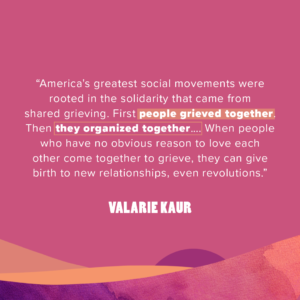
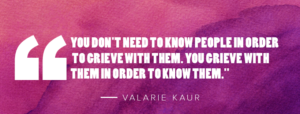









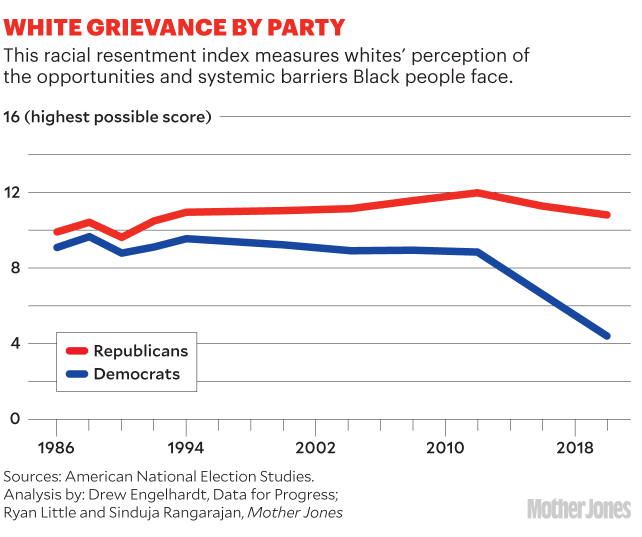 What do we know about more recent views of racism? One thing we know for sure is that both white and Black Americans have gotten
What do we know about more recent views of racism? One thing we know for sure is that both white and Black Americans have gotten 